Panoramic windows: inside view
Windows are of great importance for the mood in the room. Their size and design elements are the most important qualities for harmony with the interior. If the view from the window allows, then the panoramic wall can become the central figure in the room.
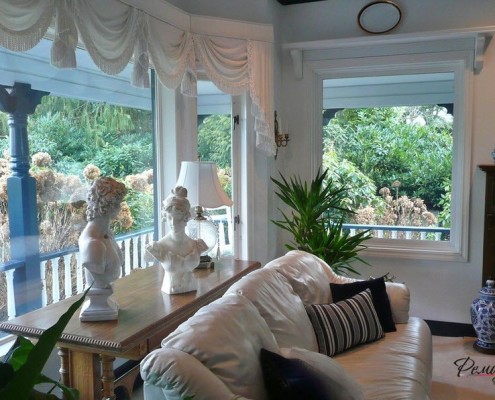
Such an unusual kind of interior design is a glass surface from floor to ceiling. Usually such windows are chosen by free-spirited, purposeful people. A large area of glazing is recognized as a sign of housing belonging to an elite group. The main task of installing such windows is to expand the enclosed space due to the transparency of one of the walls of the room.
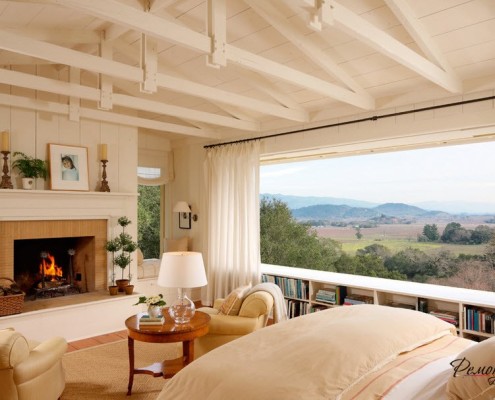
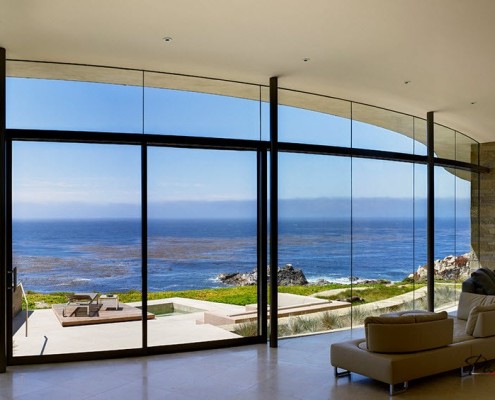
General characteristics and types of panoramic windows
To make panoramic windows a truly functional and beautiful element of the interior, it is necessary to carefully select the frame design and glazing methods.
The large area of the glazed surface implies a large load on the frame. In this case, it is important to combine two factors:
- the frame must be carefully strengthened and calculated;
- the frame should not be heavy and bulky.
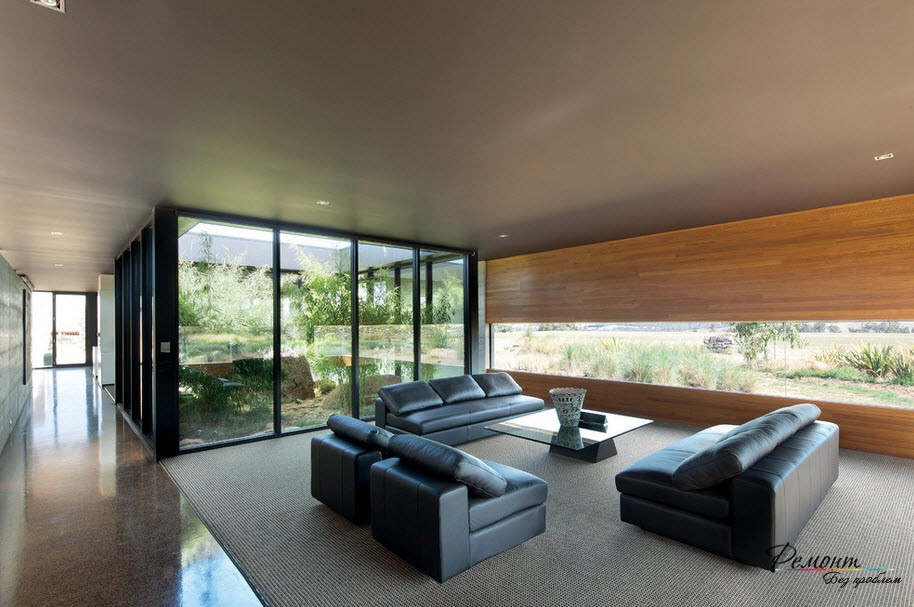
Frames can be made in several versions:
- traditional swing:
- sliding;
- folding.
The most common material is PVC profile. If the designer's intent requires special lightness, then frameless design can be used. In this case, the glass sheets are connected by special means.
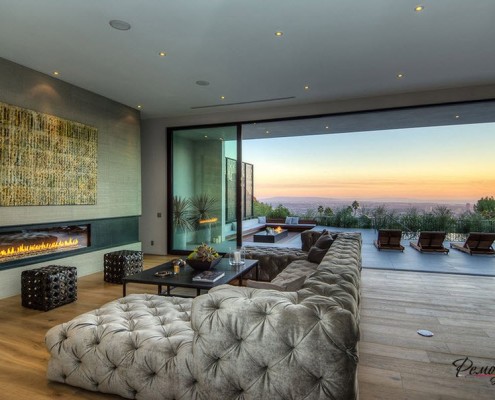
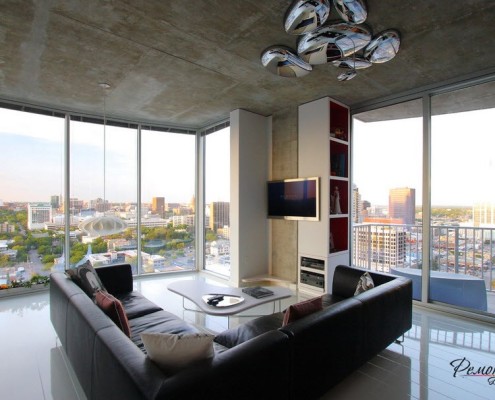
The choice of glasses is one of the most important tasks. The main property in this case is the strength of the glass. For the design of large areas, special types of glass are used:
- strained glass;
- laminated;
- products with a special coating;
- tinted;
- reflective;
- energy saving.
For the production of tempered glass, the raw material undergoes thermal and chemical processing. This provides the necessary internal tension and allows the glass to become five times stronger.
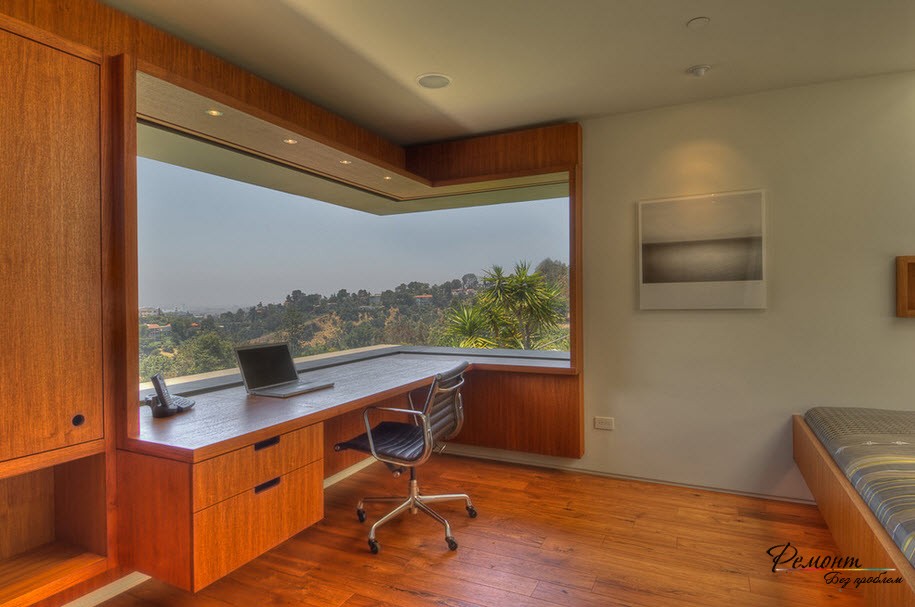
Laminated glass or triplex consists of several layers. For their reliable fastening, special compounds and films are used. In the manufacture of a coated product, a special reinforcing film is applied to the glass. These methods are designed to make glass stronger. Tinted glass can be used to avoid excessive sun exposure. This type of glazing is suitable for the sunny side of the house or when the glass is on the roof. Instead of tinting, reflective coatings are suitable. They have greater transparency than tinted ones, while maintaining the function of sun protection.
The issue of saving money on utility bills will help to solve double-glazed windows with energy-saving glass. The use of such material can compensate for the large heat losses that are inevitable with a large glazing area. Typically, these are single or double glazing units that use E-glass or K-glass. The first variety is characterized by a silver coating, the second by a tin oxide coating. In this case, the space between the glasses is filled with an inert gas. All these measures affect heat saving and should be taken into account when installing panoramic windows.
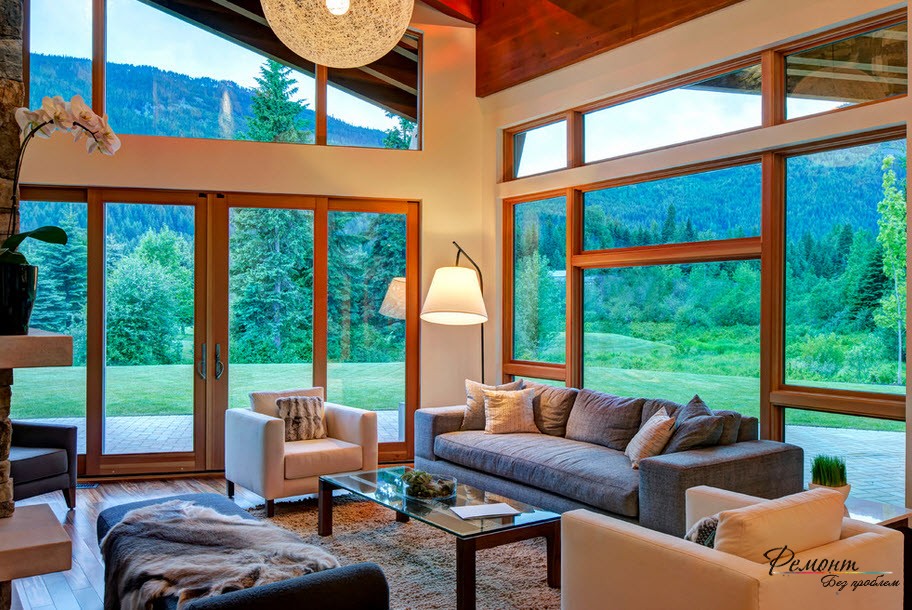
Pros and cons of panoramic glazing
When choosing panoramic windows, one should take into account the non-standard design of their design. Since a large volume of glass covering has a number of properties that distinguish it from ordinary windows, a number of disadvantages and advantages of this choice should be considered.
Typically, such decorative elements are installed in rooms where the ceiling height reaches 3-5 meters. More light and air in the room bring a person closer to nature. This is a definite plus, but do not forget about the disadvantages:
- heat losses increase significantly, which will affect the bills for heat energy;
- the possibility of strangers entering the premises increases significantly, which will require the adoption of costly measures to protect their homes;
- a large area of pollution associated with condensate and frost;
- excess sunlight in the room;
- there are temperature restrictions for installing panoramic windows;
- expensive maintenance (industrial mountaineering).
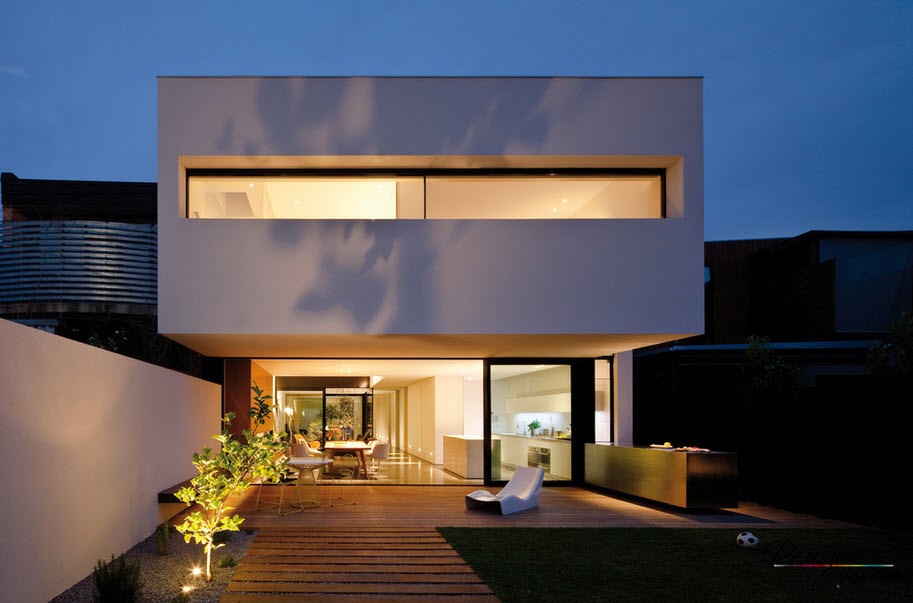
Modern technologies allow minimizing design flaws. The main criterion is the professional and competent installation of double-glazed windows and related elements of the system.
Among the advantages of such windows:
- soundproofing;
- creating a sense of space;
- abundance of light;
- stunning street view;
- stylish interior and exterior of the premises;
- when using glasses produced using the latest technologies, the ability to avoid the disadvantages of conventional double-glazed windows;
- in the event of a building collapse, the space near such a window will be a safe place along with doorways and load-bearing walls, since the frame for such a heavy glass sheet has additional reinforcement.
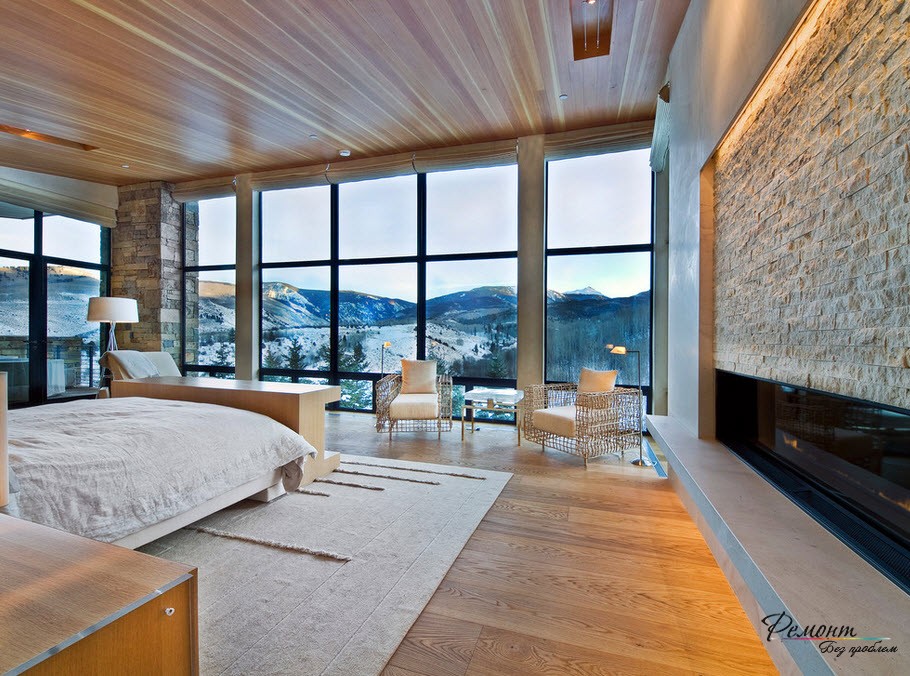
The combination of positive qualities with the ability to minimize negative manifestations makes the obvious choice in favor of such glazing.
Glass wall in the interior
A panoramic window is, first of all, a lot of light and colors that are transferred to the premises from the street. There are many ways to use this technology for your home. You can glaze a loggia, part of a wall, an entrance group, or completely the entire wall. An unusual move can be the design of a panoramic attic.
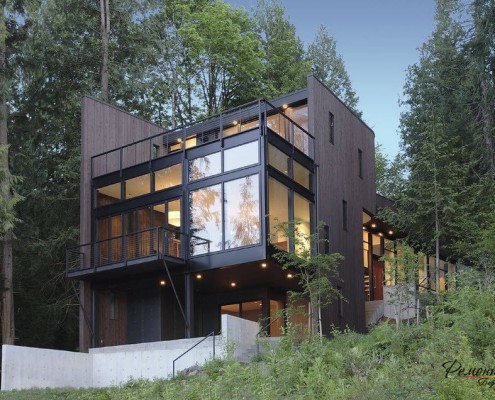
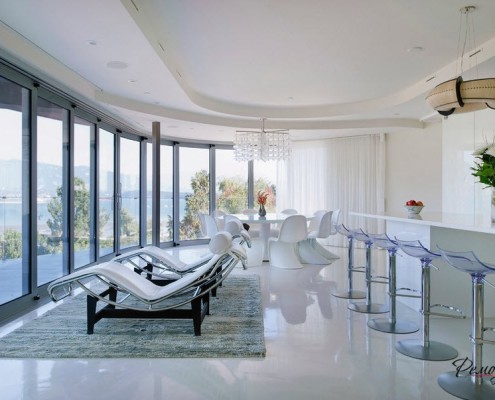
The scope for the designer's imagination in this case is not much limited. Making a panoramic window in the interior can be an interesting experience. First you need to make sure that all the practical aspects associated with the specifics of such glazing are taken into account. For example, a slot convector located close to the glass wall will help keep the heat in the room.
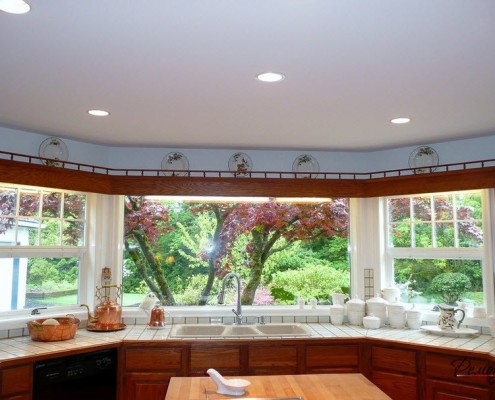
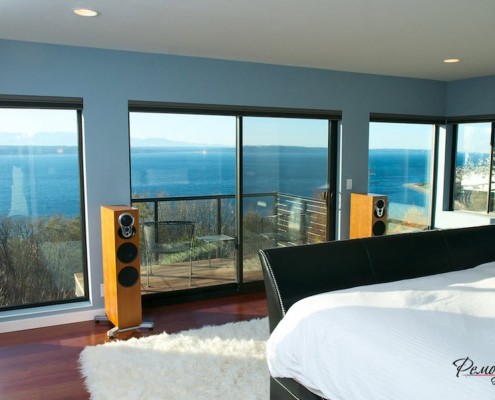
In addition, you can order a coating of a special metal film. It will solve several problems at the same time: it will make the glass extremely durable and protect it from unwanted electronic penetration better.
It is important to keep such a surface clean. This can be achieved by attracting specialists from this field. It is impossible to clean such a huge area without special equipment.
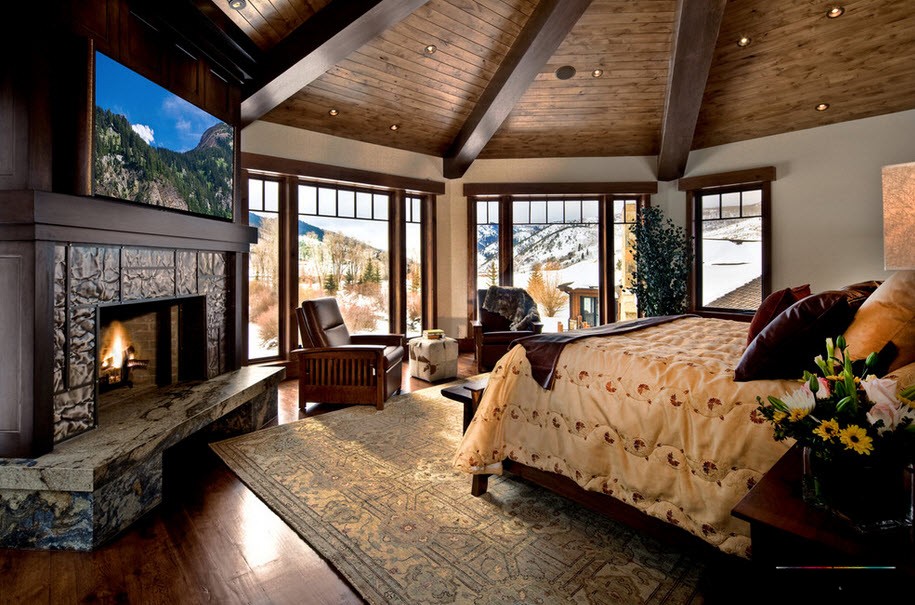
When all the practical points are resolved, you can proceed to the design. An ideal panoramic window should be no less than half the width of the room. However, it should not be more than one tenth of the room.
We can assume that such a design is just a huge picture on the wall and the same requirements are imposed on it. The use of curtains in this case is best limited. But, if the use of elements that close the window cannot be avoided, then some features must be taken into account. Materials must be thin and translucent, otherwise the whole effect of the huge window will disappear. Roman or Japanese curtains are suitable here. Their advantage is a lightweight design and ease of manipulation.
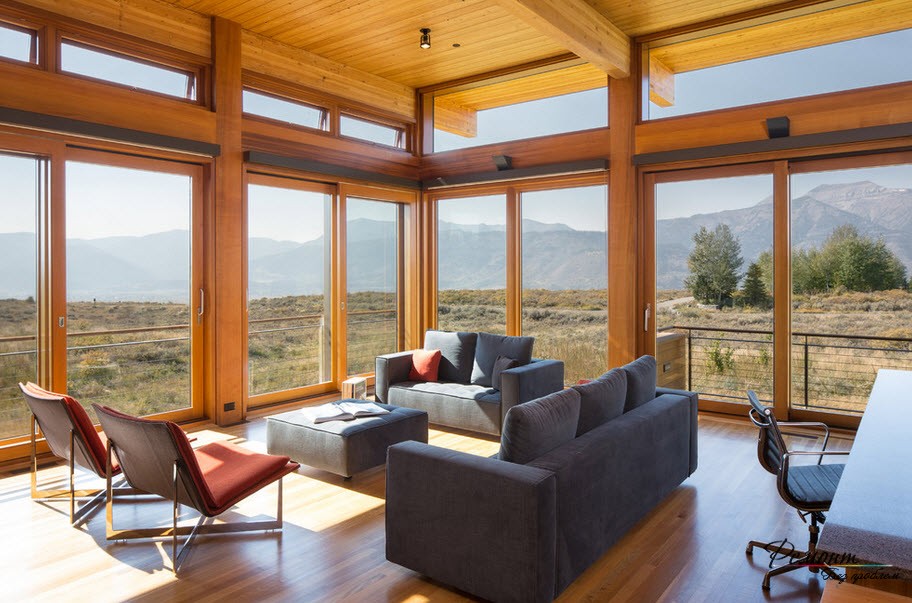
Since most often a panoramic window is considered an element of a minimalist style, it is better to keep the entire interior in the same flow. A small amount of functional furniture, a minimum of accessories and natural colors will help to emphasize the vast space and spaciousness. If you manage to follow all the recommendations, then the result will be a comfortable bright room that will captivate guests with stunning views of the street.
